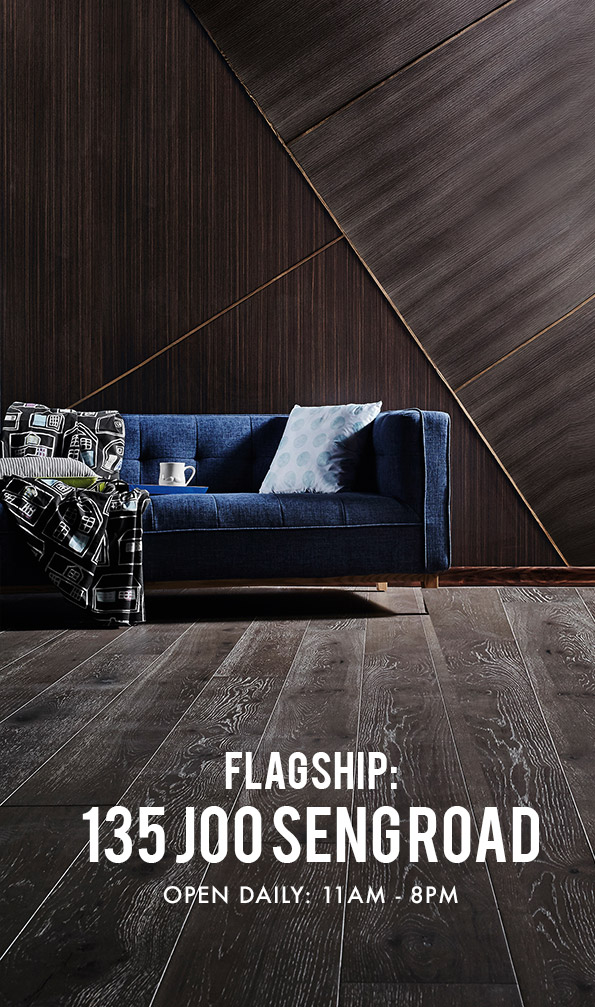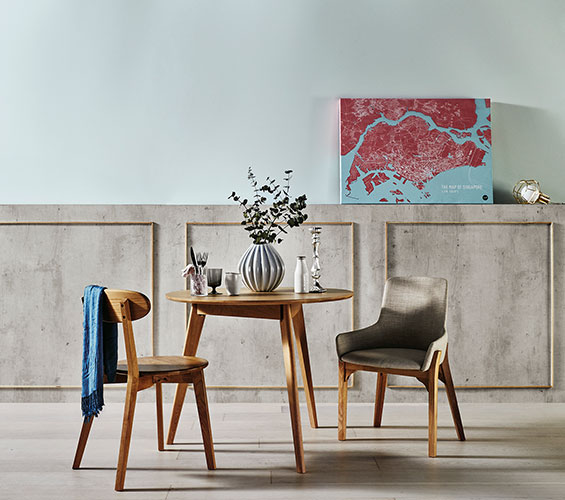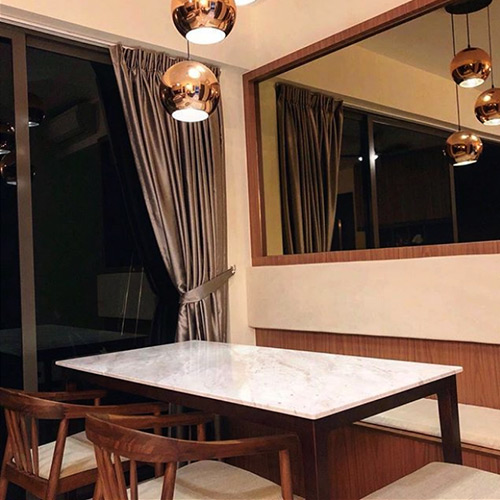Furniture Trends and Design Styles
Furniture design is an art form that transcends mere functionality, shaping the ambiance and character of our living spaces. From ancient Egyptian woodwork to the sleek modernism of the 20th century, furniture has evolved remarkably, reflecting shifting cultural values, technological advancements, and artistic movements. Today, furniture design encompasses a diverse array of styles, each with its unique aesthetic and philosophical underpinnings.
Whether it's the minimalist elegance of Scandinavian design or the rustic charm of farmhouse chic, furniture plays a pivotal role in defining our personal styles and creating harmonious living environments. B. The journey of furniture design has been a captivating one, with each era leaving an indelible mark on the way we perceive and interact with these essential household pieces.

Modern Furniture Design
Emerging from the Bauhaus movement and the pioneering works of designers like Ludwig Mies van der Rohe and Le Corbusier, modern furniture design celebrates simplicity, functionality, and a rejection of superfluous ornamentation.
A. Defined by clean lines, geometric shapes, and a minimalist aesthetic, modern furniture embraces the principles of form follows function.
B. With a focus on eliminating clutter and creating a sense of openness, this style prioritizes negative space and streamlined silhouettes.
C. Materials like steel, glass, and plastic are favored for their industrial appeal and durability.
D. Iconic pieces such as the Eames Lounge Chair and the Barcelona Chair epitomize the modern design ethos, blending sophisticated engineering with timeless elegance.
E. These furniture pieces not only serve practical purposes but also double as sculptural art, seamlessly integrating form and function.
Contemporary Furniture Design
Bridging the gap between traditional and modern sensibilities, contemporary furniture design strikes a harmonious balance between innovation and familiarity.
A. While rooted in current trends and philosophies, this style skillfully incorporates elements from various eras, creating a fresh and eclectic aesthetic.
B. Comfort and functionality are paramount, with pieces designed to accommodate modern lifestyles and evolving needs.
C. Natural materials like wood and leather are often paired with sleek metals and glass, resulting in a warm yet sophisticated ambiance.
D. Sectional sofas, plush accent chairs, and coffee tables with clean lines are popular components of contemporary living spaces.
E. This versatile style allows for personal expression while maintaining a cohesive and inviting atmosphere.
Rustic Furniture Design
Embracing the beauty of nature and celebrating the charm of imperfection, rustic furniture design has captured the hearts of those seeking a cozy and down-to-earth aesthetic.
A. Defined by raw materials, distressed finishes, and a celebration of natural textures, this style evokes a sense of warmth and authenticity.
B. Reclaimed wood, exposed beams, and weathered surfaces are hallmarks of rustic furniture, adding depth and character to any space.
C. The use of earthy tones, such as warm browns, greens, and grays, further enhances the organic and inviting ambiance.
D. Pieces like farmhouse tables, log beds, and twig-framed mirrors bring the outdoors in, creating a connection with nature.
E. Rustic furniture design embodies a nostalgic charm, inviting us to slow down and appreciate the simple pleasures of life.
Industrial Furniture Design
Born from the repurposing of factory elements and the celebration of raw materials, industrial furniture design is a bold and unapologetic style that pays homage to the gritty urban landscape.
A. This trend embraces exposed materials like metal, brick, and concrete, creating a raw and unfinished aesthetic that exudes a sense of edginess.
B. Inherently masculine and utilitarian, industrial furniture pieces often feature distressed finishes and a fusion of form and function.
C. Elements like pipe shelving, factory stools, and exposed Edison bulb lighting contribute to the industrial chic vibe.
D. By repurposing and reimagining industrial elements, this furniture style celebrates the beauty of imperfection and the resilience of human ingenuity.
E. Whether in a loft apartment or a modern farmhouse, industrial furniture pieces add a touch of urban grit and character to any space.
Sustainable and Eco-Friendly Furniture Design
As environmental consciousness continues to grow, sustainable and eco-friendly furniture design has emerged as a responsible and innovative approach to home furnishings.
A. Prioritizing the use of recycled, renewable, and ethically sourced materials, this style reduces the environmental impact of furniture production.
B. Pieces crafted from bamboo, cork, reclaimed wood, or recycled plastics not only boast a unique aesthetic but also contribute to a greener planet.
C. Sustainable furniture design emphasizes durability and longevity, encouraging a shift away from the disposable mindset and towards a more conscious approach to consumption.
D. Brands and artisans are exploring new techniques, such as using ocean plastics or repurposed materials, to create beautiful and eco-friendly pieces.
E. By embracing sustainable furniture design, we can create living spaces that reflect our commitment to environmental stewardship and responsible living.
Emerging Furniture Design Trends
As the world of furniture design continues to evolve, exciting new trends are reshaping the way we perceive and interact with our living spaces.
A. Hybrid and fusion styles that blend diverse influences are gaining popularity, creating unique and personalized aesthetics.
B. The integration of technology into furniture design is on the rise, with smart furniture pieces offering connectivity, entertainment, and convenience.
C. Customization and personalization are becoming increasingly important, with companies allowing customers to custom furniture to their specific needs and preferences.
D. Multifunctional and space-saving designs are revolutionizing small living spaces, providing versatility and adaptability in compact areas.
E. As our lifestyles and values shift, furniture design will continue to push boundaries, anticipating and responding to our ever-changing needs.
From the sleek modernity of contemporary pieces to the rustic charm of farmhouse furnishings, the world of furniture design offers a diverse tapestry of styles to suit every taste and lifestyle. Each design philosophy is a reflection of cultural values, artistic movements, and personal expression.
Whether you gravitate towards the minimalist elegance of modern design or the industrial edge of urban chic, furniture plays a vital role in shaping the character and ambiance of our living spaces. Embracing personal style and allowing furniture to reflect your unique personality is the essence of creating a truly harmonious and inviting home. As we look to the future, furniture design will continue to push boundaries, blending innovation with tradition, sustainability with functionality, and art with practicality, providing us with an ever-evolving canvas to express our individuality and create spaces that inspire and delight.



